Old Royal Crime – Dark Riddle Of Young Princes In The Tower Of London
A. Sutherland - AncientPages.com - For more than 500 years, one unsolved murder mystery has occupied the thoughts and imagination of people around the world.
On April 9, 1483, King Edward IV died suddenly. His two sons were Edward V (aged 12) and Richard (aged 9) of Shrewsbury, Duke of York.
Before he died, the king appointed Protector for his sons, and this person was their uncle Richard, Duke of Gloucester.
This meant that he would officially run the country until his nephew, Prince Edward, was old enough to rule by himself.
Shortly after the young Edward's coronation, his uncle Richard managed to hold the two boys captive in the Tower of London. On June 26, 1483, he officially announced that neither prince could inherit the throne because their father hadn't been legally married to their mother.
An Act of Parliament of 1483, known as Titulus Regius, declared the brothers illegitimate and gave the crown to Richard, Duke of Gloucester. He ascended the throne as King Richard III of England in July 1483.
King Edward V and the Duke of York in the Tower of London by Paul Delaroche. The theme of innocent children awaiting an uncertain fate was popular amongst 19th-century painters. Image via Wikipedia
Clearly, King Richard III is the most likely suspect and has been accused of having prepared allegations. After all, the princes in the Tower disappeared while in his care. When the rumors that he had killed them spread in late 1483, Richard made no attempts to prove that they were still alive. Instead, he remained silent and did not open any investigation into their disappearance.
Was He Guilty Or Did He Try To Cover-Up Another Royal Secret?
However, according to some historians, it does not make him a murderer yet, even if Tudor's chroniclers accused Richard III of murdering his nephews, who would threaten his power.
But again, it may seem that it was an element of the black legend of the king intentionally created by supporters of the new dynasty.
What Did Happen To The Young Princes?
Were the Princes in the Tower murdered, and who did it?
It is said that during the summer of 1483, the princes were alive and seen playing together in the courtyard of the Tower. Later, nothing is known about them, and their fate has been a mystery, so it remains until today.
Modern historians and contemporary chroniclers have wondered: how could nobody know what happened to such important royal people?
Or perhaps some of those involved knew exactly what happened, but they stubbornly kept silent about the boys?
We do not know if the princes died or were murdered in 1483; we also do not know who killed them.
The list of those interested in the princes' death is quite long. One such candidate interested in the boys' death could be Henry VII. However, Henry's only opportunity to murder the princes would have been after his accession in 1485, when the two boys had already been missing for two years. One can also wonder how much their mother, Elizabeth Woodville knew about the fates of her sons.
During renovation works on the White Tower in 1674, the skeletons of two children were discovered about 10 feet under the staircase leading to the chapel. At that time, the skeletons were thought to have been those of the two princes.
Once again, the remains were examined (insufficiently) in 1933, but no attempt was made to determine whether the bones were male or female.
No further scientific examination has since been conducted on the bones in Westminster Abbey.
The princes' disappearance had a substantial impact on the country's political reality. Whatever happened to them is that they were believed to have been murdered, and Richard was blamed for this crime, even if he had not been directly responsible for the boys' death.
However, Richard had kept the children under tight guard, which made him responsible for their welfare. The belief that the two princes had been murdered made Richard III guilty of negligence, if not malice. Many historians at least conclude that he was the likeliest candidate for the disappearance of the princes, and are many reasons that he could do so.
Updated on November 20, 2022
Written by – A. Sutherland AncientPages.com Staff Writer
Copyright © AncientPages.com All rights reserved. This material may not be published, broadcast, rewritten or redistributed in whole or part without the express written permission of AncientPages.com
Expand for referencesReferences:
Matthew Lewis, The Survival of the Princes in the Tower: Murder, Mystery and Myth
Weir A. The Princes in the Tower
More From Ancient Pages
-
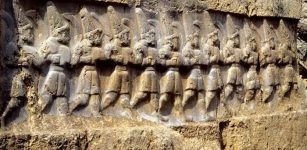 Secret Ancient Lunar Calendar May Be Hidden At A Hittite Sanctuary
Archaeology | Jul 3, 2019
Secret Ancient Lunar Calendar May Be Hidden At A Hittite Sanctuary
Archaeology | Jul 3, 2019 -
 The Ancient Giants Who Ruled America: The Missing Skeletons And The Great Smithsonian Cover-Up
Biblical Mysteries | Apr 26, 2014
The Ancient Giants Who Ruled America: The Missing Skeletons And The Great Smithsonian Cover-Up
Biblical Mysteries | Apr 26, 2014 -
 Evidence Of Stone Age Ear and Lip Piercing Found At Boncuklu Tarla Neolithic Site In Türkiye
Archaeology | Mar 14, 2024
Evidence Of Stone Age Ear and Lip Piercing Found At Boncuklu Tarla Neolithic Site In Türkiye
Archaeology | Mar 14, 2024 -
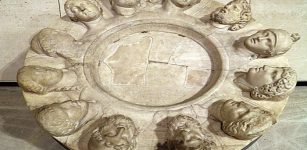 ‘Altar Of Twelve Gods’ At Gabii, Italy Was Once An Important Ancient Place
Civilizations | Apr 1, 2023
‘Altar Of Twelve Gods’ At Gabii, Italy Was Once An Important Ancient Place
Civilizations | Apr 1, 2023 -
 Vimanas – Flying Machines Soaring Through Ancient Sky Of India
Featured Stories | May 27, 2014
Vimanas – Flying Machines Soaring Through Ancient Sky Of India
Featured Stories | May 27, 2014 -
 Ancient Mystery Of The Man Mound And The Giant With Horns In Wisconsin
Featured Stories | Mar 1, 2021
Ancient Mystery Of The Man Mound And The Giant With Horns In Wisconsin
Featured Stories | Mar 1, 2021 -
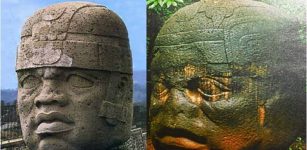 The Olmecs – Who They Were, Where They Came From Still Remains A Mystery
Civilizations | Feb 19, 2015
The Olmecs – Who They Were, Where They Came From Still Remains A Mystery
Civilizations | Feb 19, 2015 -
 Mysterious 4,000-Year-Old Table-Like And Unique Dolmen Discovered In Galilee Hills, Israel
Archaeology | Mar 6, 2017
Mysterious 4,000-Year-Old Table-Like And Unique Dolmen Discovered In Galilee Hills, Israel
Archaeology | Mar 6, 2017 -
 3,000-Year-Old Stela Challenges Assumptions Of Gender And Social Roles In Prehistoric Times
Archaeology | Nov 16, 2023
3,000-Year-Old Stela Challenges Assumptions Of Gender And Social Roles In Prehistoric Times
Archaeology | Nov 16, 2023 -
 New Chemical Reactions To Generate Building Blocks Of Proteins And DNA – Discovered
DNA | Jul 29, 2022
New Chemical Reactions To Generate Building Blocks Of Proteins And DNA – Discovered
DNA | Jul 29, 2022 -
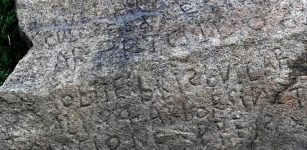 Mysterious Rock Inscription Found In Brittany Baffles Experts – Reward If You Can Decipher It
Archaeology | May 15, 2019
Mysterious Rock Inscription Found In Brittany Baffles Experts – Reward If You Can Decipher It
Archaeology | May 15, 2019 -
 Riddle Of The Ancient Sarcophagus And Its Strange Properties – Can Science Solve This Mystery?
Featured Stories | Nov 7, 2019
Riddle Of The Ancient Sarcophagus And Its Strange Properties – Can Science Solve This Mystery?
Featured Stories | Nov 7, 2019 -
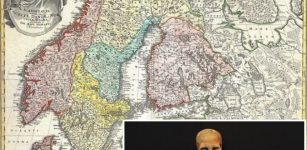 DNA Shows First Scandinavians Followed Two Distinct Migration Routes
Archaeology | Jan 11, 2018
DNA Shows First Scandinavians Followed Two Distinct Migration Routes
Archaeology | Jan 11, 2018 -
 Mysterious Deaths In A Dangerous Valley May Be Related To Ancient Events
Featured Stories | Mar 14, 2022
Mysterious Deaths In A Dangerous Valley May Be Related To Ancient Events
Featured Stories | Mar 14, 2022 -
 Mysterious 70-Million-Year-Old Underground Village And Magnificent Tower Of Eben-Ezer In Belgium
Featured Stories | Mar 20, 2017
Mysterious 70-Million-Year-Old Underground Village And Magnificent Tower Of Eben-Ezer In Belgium
Featured Stories | Mar 20, 2017 -
 Archaeological Mystery Of Laos Megalithic Jars Continues – New Attempt To Solve The Riddle
Archaeology | Mar 12, 2021
Archaeological Mystery Of Laos Megalithic Jars Continues – New Attempt To Solve The Riddle
Archaeology | Mar 12, 2021 -
 Lost Medieval Home Of The Lords Of The Isles – Reconstructed Virtually
Archaeology | May 29, 2019
Lost Medieval Home Of The Lords Of The Isles – Reconstructed Virtually
Archaeology | May 29, 2019 -
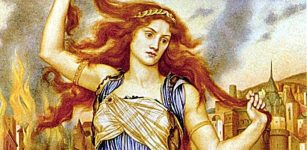 Cassandra: Greek Goddess Who Foretold Cursed Prophecies
Featured Stories | Aug 24, 2016
Cassandra: Greek Goddess Who Foretold Cursed Prophecies
Featured Stories | Aug 24, 2016 -
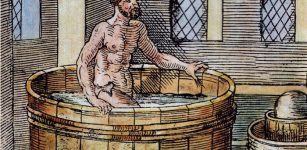 Who Said ‘Eureka’ First And Why?
Ancient History Facts | Feb 8, 2023
Who Said ‘Eureka’ First And Why?
Ancient History Facts | Feb 8, 2023 -
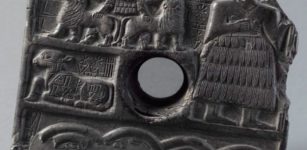 Votive Plaque Dedicated To Dudu High Priest Of God Ningirsu
Artifacts | Jan 16, 2017
Votive Plaque Dedicated To Dudu High Priest Of God Ningirsu
Artifacts | Jan 16, 2017



